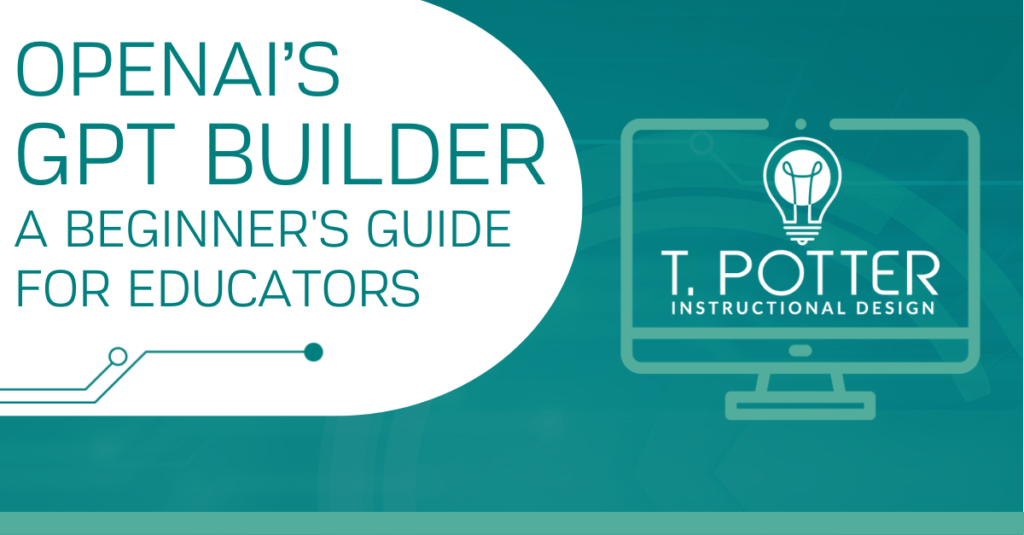Applying Educational Theory to Creating an AI Chatbot
Over the past several weeks, as I have been tinkering with using OpenAI’s GPT Builder to design a teacher assistant chatbot, I’ve tried a dozen or so different design approaches and prompting strategies with varying degrees of effectiveness. In all of this experimenting, I’ve had the most success in teaching the chatbot what I want it to do when I’ve used the same teaching methods that I use in the classroom. To mangle the realtor’s mantra: it’s all about iteration, iteration, iteration.
The process is the point.
When I teach English Composition, I begin every semester with the same reading assignment: Betty Flowers’s essay, “Madman, Architect, Carpenter, Judge: Roles and the Writing Process” (1981), which emphasizes that writing is not created using a linear, one-and-done approach, but rather through a recursive, iterative process of generating, organizing, building, evaluating, and refining through countless revisions.
Once students have been introduced to the writing process, they write about the process and reflect on their experience as writers. Next, we’ll zoom in on the Madman stage and spend a few days in class practicing brainstorming and idea-generating techniques. Then it’s back to the writing process as a whole, and then on to examining and practicing the drafting stage. They learn and adapt with each iteration in a cycle of drafting, receiving feedback, revising, and refining.
With each new step in the process, students are building on their foundational understanding of the writing process but also complicating and deepening that understanding. Finally, at the end of the semester, they’ll write a reflective essay looking back at the process of writing all of their essays. The whole semester spirals around that one foundational concept.

This method of teaching and learning, rooted in the constructivist approach, hinges on the idea that understanding deepens through revisiting and building upon foundational concepts. Each essay draft doesn’t just aim to improve the work in progress but serves as a critical learning moment, an opportunity to apply lessons learned and venture a little deeper into the craft.
Now You’re Thinking With Neural Networks
This method of teaching human brains works for AI as well because of the neural network design of ChatGPT’s construction. Neural networks consist of layers of nodes, or neurons, connected by synapses. These neurons process input data, learn from it, and make predictions or decisions. The first layer receives the input data, intermediate layers (hidden layers) process the data through a series of mathematical transformations, and the final layer produces the output. The network “learns” by adjusting connections based on the accuracy of its output during training.

In applications like ChatGPT, a neural network learns to understand and generate human-like text. It starts by recognizing basic elements of language (like individual words), and as information flows through the layers, it learns to understand syntax, grammar, and context, enabling it to construct coherent and contextually relevant sentences.
Applying Constructivist Theory to Building a GPT
The act of learning, whether by human or machine, is fundamentally iterative. The constructivist approach to teaching and learning is about building upon each attempt, using what was learned to inform the next effort. And, because neural networks learn information and refine their outputs similarly to humans, constructivism is an effective approach to teaching a GPT.
Just like working through the writing process, building a chatbot requires an iterative, reflective approach. Initially, the AI might generate content akin to a rough draft—functional but unrefined. Through repeated cycles of feedback and refinement, akin to revising a draft based on critique, the chatbot’s outputs became more sophisticated, more nuanced, and better tailored.
Over the next few blog posts, we’ll take a look at how constructivist learning theory can guide us in developing educational AI. I’m going to show you how educators can use their existing pedagogical skills to develop and refine educational AI tools, making technology integration into education a more approachable and enriching experience. Stay tuned.
Abi Bechtel
Abi Bechtel is a writer, educator, and ChatGPT enthusiast. They have an MFA in Creative Writing from the Northeast Ohio MFA program through the University of Akron, and they just think generative AI is neat.
Abi Bechtel is a writer, educator, and ChatGPT enthusiast. They have an MFA in Creative Writing from the Northeast Ohio MFA program through the University of Akron, and they just think generative AI is neat.


